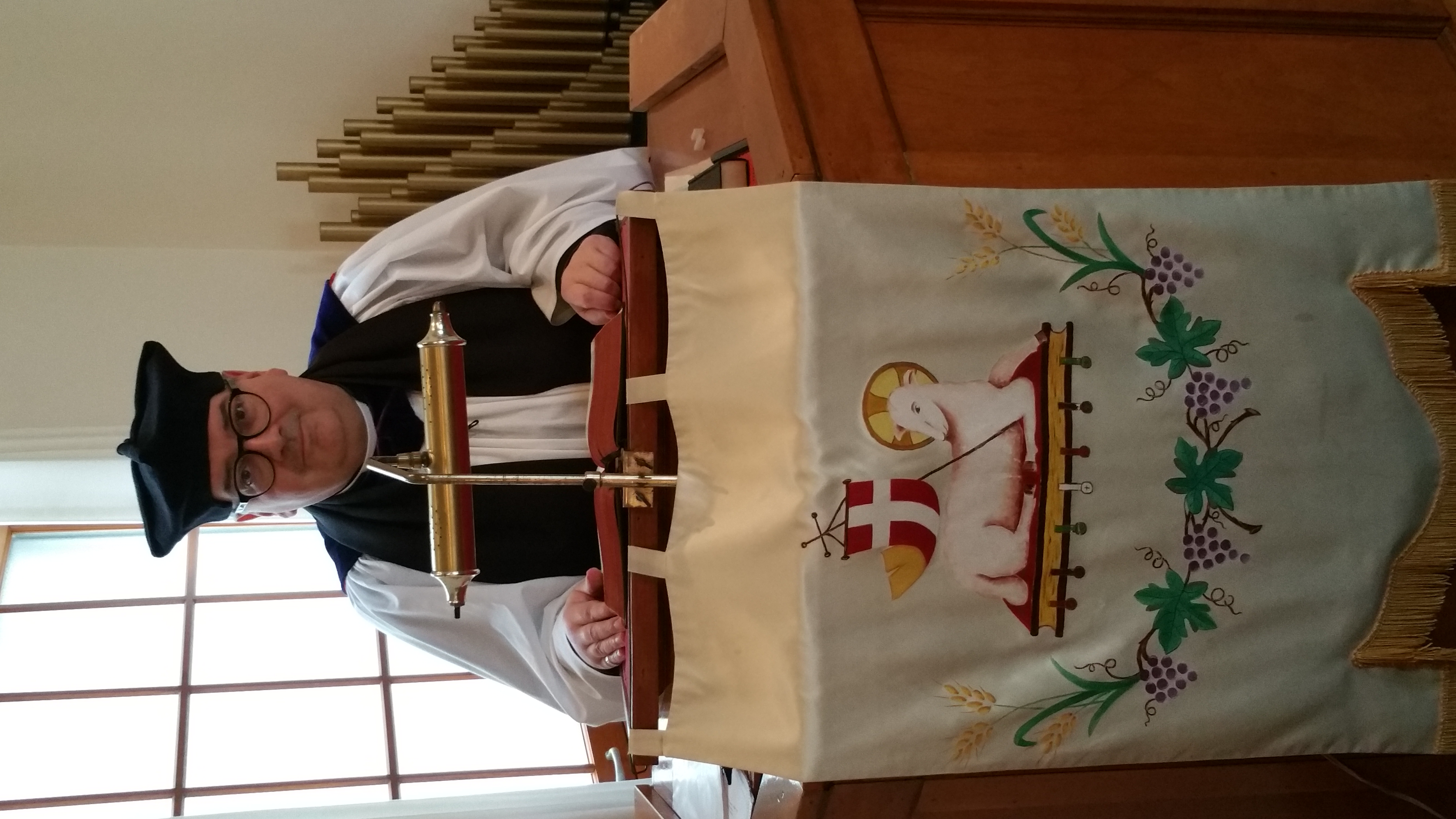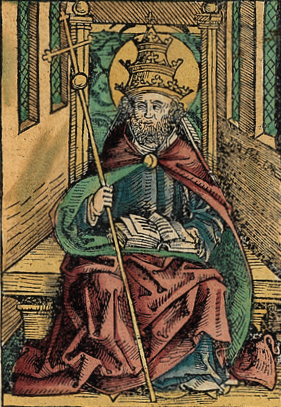|
Anglican Church Of Aotearoa, New Zealand, And Polynesia
The Anglican Church in Aotearoa, New Zealand and Polynesia ( mi, Te Hāhi Mihinare ki Aotearoa ki Niu Tīreni, ki Ngā Moutere o te Moana Nui a Kiwa; formerly the Church of the Province of New Zealand) is a province of the Anglican Communion serving New Zealand, Fiji, Tonga, Samoa, and the Cook Islands. Since 1992 the church has consisted of three '' tikanga'' or cultural streams: Aotearoa, New Zealand, and Polynesia. The church's constitution says that, among other things, it is required to "maintain the right of every person to choose any particular cultural expression of the faith". As a result, the church's General Synod has agreed upon the development of the three-person primacy based on this three ''tikanga'' system. It has three primates (leaders), each representing a ''tikanga'', who share authority. The Anglican Church is an apostolic church, which claims to trace its bishops back to the apostles via holy orders. ''A New Zealand Prayer Book, He Karakia Mihinare o Aotearo ... [...More Info...] [...Related Items...] OR: [Wikipedia] [Google] [Baidu] |
Anglican Church In Aotearoa, New Zealand And Polynesia Logo
Anglicanism is a Western Christian tradition that has developed from the practices, liturgy, and identity of the Church of England following the English Reformation, in the context of the Protestant Reformation in Europe. It is one of the largest branches of Christianity, with around 110 million adherents worldwide . Adherents of Anglicanism are called ''Anglicans''; they are also called ''Episcopalians'' in some countries. The majority of Anglicans are members of national or regional ecclesiastical provinces of the international Anglican Communion, which forms the third-largest Christian communion in the world, after the Roman Catholic Church and the Eastern Orthodox Church. These provinces are in full communion with the See of Canterbury and thus with the Archbishop of Canterbury, whom the communion refers to as its ''primus inter pares'' (Latin, 'first among equals'). The Archbishop calls the decennial Lambeth Conference, chairs the meeting of primates, and is the presi ... [...More Info...] [...Related Items...] OR: [Wikipedia] [Google] [Baidu] |
Tikanga Māori
Tikanga is a Māori concept incorporating practices and values from mātauranga Māori, Māori knowledge. Tikanga is translated into the English language with a wide range of meanings — culture, custom, ethic, etiquette, fashion, formality, lore, manner, meaning, mechanism, method, protocol, style, customary law. Māori scholar Hirini Moko Mead states that tikanga can be viewed from several perspectives. One view is that tikanga Māori 'controls interpersonal relationships' as it guides the interactions of meetings, and provides identity to individuals. Another view is through ethics, that tikanga Māori is a practised code of conduct. The word tikanga is derived from the Māori word ''tika'' meaning 'right' or 'correct' so it follows that it involves moral judgements about what is the right way of doing something. Lawyers view tikanga Māori through the lens of customary law, which comes from an authority rather than a normative system. This is being tested in the New ... [...More Info...] [...Related Items...] OR: [Wikipedia] [Google] [Baidu] |
The Encyclopedia Of New Zealand
''Te Ara: The Encyclopedia of New Zealand'' is an online encyclopedia established in 2001 by the New Zealand Government's Ministry for Culture and Heritage. The web-based content was developed in stages over the next several years; the first sections were published in 2005, and the last in 2014 marking its completion. ''Te Ara'' means "the pathway" in the Māori language, and contains over three million words in articles from over 450 authors. Over 30,000 images and video clips are included from thousands of contributors. History New Zealand's first recognisable encyclopedia was ''The Cyclopedia of New Zealand'', a commercial venture compiled and published between 1897 and 1908 in which businesses or people usually paid to be covered. In 1966 the New Zealand Government published ''An Encyclopaedia of New Zealand'', its first official encyclopedia, in three volumes. Although now superseded by ''Te Ara'', its historical importance led to its inclusion as a separate digital reso ... [...More Info...] [...Related Items...] OR: [Wikipedia] [Google] [Baidu] |
Church Of England
The Church of England (C of E) is the established Christian church in England and the mother church of the international Anglican Communion. It traces its history to the Christian church recorded as existing in the Roman province of Britain by the 3rd century and to the 6th-century Gregorian mission to Kent led by Augustine of Canterbury. The English church renounced papal authority in 1534 when Henry VIII failed to secure a papal annulment of his marriage to Catherine of Aragon. The English Reformation accelerated under Edward VI's regents, before a brief restoration of papal authority under Queen Mary I and King Philip. The Act of Supremacy 1558 renewed the breach, and the Elizabethan Settlement charted a course enabling the English church to describe itself as both Reformed and Catholic. In the earlier phase of the English Reformation there were both Roman Catholic martyrs and radical Protestant martyrs. The later phases saw the Penal Laws punish Ro ... [...More Info...] [...Related Items...] OR: [Wikipedia] [Google] [Baidu] |
Established Church
A state religion (also called religious state or official religion) is a religion or creed officially endorsed by a sovereign state. A state with an official religion (also known as confessional state), while not secular, is not necessarily a theocracy. State religions are official or government-sanctioned establishments of a religion, but the state does not need to be under the control of the religion (as in a theocracy) nor is the state-sanctioned religion necessarily under the control of the state. Official religions have been known throughout human history in almost all types of cultures, reaching into the Ancient Near East and prehistory. The relation of religious cult In modern English, ''cult'' is usually a pejorative term for a social group that is defined by its unusual religious, spiritual, or philosophical beliefs and rituals, or its common interest in a particular personality, object, or goal. This s ... and the state was discussed by the Ancient Rome, ancient ... [...More Info...] [...Related Items...] OR: [Wikipedia] [Google] [Baidu] |
Rite (Christianity)
In Christianity, a rite is used to refer to a sacred ceremony (such as anointing of the sick), which may or may not carry the status of a sacrament depending on the Christian denomination (in Roman Catholicism, anointing of the sick is a sacrament while in Lutheranism it is not). The word "rite" is also used to denote a liturgical tradition usually emanating from a specific center; examples include the Roman Rite, the Byzantine Rite, and the Sarum Rite. Such rites may include various sub-rites. For example, the Byzantine Rite (which is used by the Eastern Orthodox, Eastern Lutheran, and Eastern Catholic churches) has Greek, Russian, and other ethnically-based variants. Catholicism Within the Catholic Church, "rite" often refers to what is also called a sacrament and respective liturgies based on liturgical languages and traditional local customs as well as the ceremonies associated with the sacraments. In Christian Catholicism, for example, the sacrament of Anointing of the S ... [...More Info...] [...Related Items...] OR: [Wikipedia] [Google] [Baidu] |
Christian Liturgy
Christian liturgy is a pattern for Christian worship, worship used (whether recommended or prescribed) by a Christian congregation or Christian denomination, denomination on a regular basis. The term liturgy comes from Greek and means "public work". The majority of Christian denominations hold church services on the Lord's Day (with many offering Sunday morning and Sunday evening services); a number of traditions have mid-week Wednesday evening services as well. In some Christian denominations, liturgies are held daily, with these including those in which the canonical hours are prayed, as well as the offering of the Eucharist, Eucharistic liturgies such as Mass (liturgy), Mass, among other forms of worship. In addition to this, many Christians attend services of worship on holy days such as Christmas, Ash Wednesday, Good Friday, Feast of the Ascension, Ascension Thursday, among others depending on the Christian denomination. In most Christian traditions, liturgies are presided o ... [...More Info...] [...Related Items...] OR: [Wikipedia] [Google] [Baidu] |
Apostles In The New Testament
In Christian theology and ecclesiology, the apostles, particularly the Twelve Apostles (also known as the Twelve Disciples or simply the Twelve), were the primary Disciple (Christianity), disciples of Jesus according to the New Testament. During the Life of Jesus in the New Testament, life and ministry of Jesus in the Christianity in the 1st century, 1st century AD, the apostles were his closest followers and became the primary teachers of the gospel message of Jesus. There is also an Eastern Christianity, Eastern Christian tradition derived from the Gospel of Luke of there having been as many as Seventy disciples, seventy apostles during the time of Jesus' ministry. The commissioning of the Twelve Apostles during the ministry of Jesus is described in the Synoptic Gospels. After his Resurrection of Jesus, resurrection, Jesus sent eleven of them (as Judas Iscariot by then had Judas Iscariot#Death, died) by the Great Commission to spread his teachings to all nations. This event ... [...More Info...] [...Related Items...] OR: [Wikipedia] [Google] [Baidu] |
Anglican Bishop
The Anglican ministry is both the leadership and agency of Christian service in the Anglican Communion. "Ministry" commonly refers to the office of ordained clergy: the ''threefold order'' of bishops, priests and deacons. More accurately, Anglican ministry includes many laypeople who devote themselves to the ministry of the church, either individually or in lower/assisting offices such as lector, acolyte, sub-deacon, Eucharistic minister, cantor, musicians, parish secretary or assistant, warden, vestry member, etc. Ultimately, all baptized members of the church are considered to partake in the ministry of the Body of Christ. Each of the provinces (usually corresponding to individual world nations) of the Anglican Communion has a high degree of independence from the other provinces, and each of them have slightly different structures for ministry, mission and governance. However, personal leadership is always vested in a member of the clergy (a bishop at provincial and diocesan ... [...More Info...] [...Related Items...] OR: [Wikipedia] [Google] [Baidu] |
Apostolic Succession
Apostolic succession is the method whereby the ministry of the Christian Church is held to be derived from the apostles by a continuous succession, which has usually been associated with a claim that the succession is through a series of bishops. Those of the Anglican, Church of the East, Eastern Orthodox, Hussite, Moravian, Old Catholic, Oriental Orthodox, Roman Catholic and Scandinavian Lutheran traditions maintain that "a bishop cannot have regular or valid orders unless he has been consecrated in this apostolic succession". These traditions do not always consider the episcopal consecrations of all of the other traditions as valid. This series was seen originally as that of the bishops of a particular see founded by one or more of the apostles. According to historian Justo L. González, apostolic succession is generally understood today as meaning a series of bishops, regardless of see, each consecrated by other bishops, themselves consecrated similarly in a succession ... [...More Info...] [...Related Items...] OR: [Wikipedia] [Google] [Baidu] |
Primate (bishop)
Primate () is a title or rank bestowed on some important archbishops in certain Christian churches. Depending on the particular tradition, it can denote either jurisdictional authority (title of authority) or (usually) ceremonial precedence (title of honour). Roman Catholic Church In the Western Church, a primate is an archbishop—or, rarely, a suffragan or exempt bishop—of a specific (mostly metropolitan) episcopal see (called a ''primatial see'') who has precedence over the bishoprics of one or more ecclesiastical provinces of a particular historical, political or cultural area. Historically, primates of particular sees were granted privileges including the authority to call and preside at national synods, jurisdiction to hear appeals from metropolitan tribunals, the right to crown the sovereign of the nation, and presiding at the investiture (installation) of archbishops in their sees. The office is generally found only in older Catholic countries, and is now ... [...More Info...] [...Related Items...] OR: [Wikipedia] [Google] [Baidu] |
.jpg)






